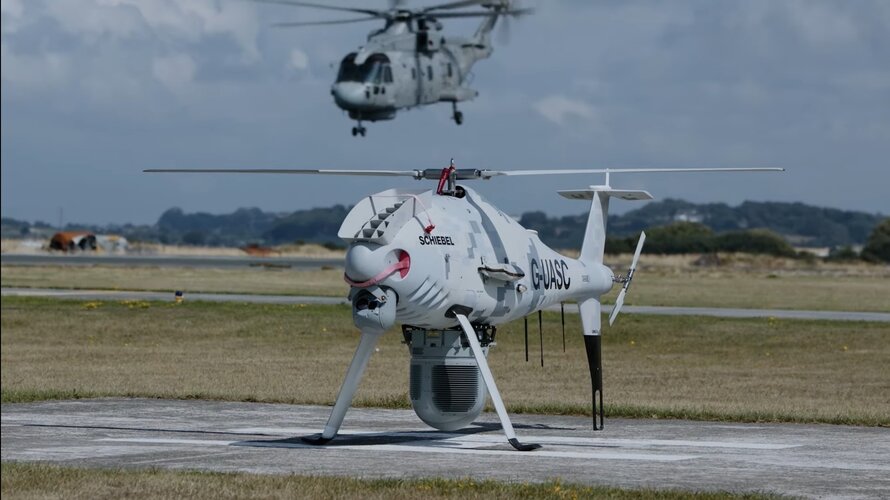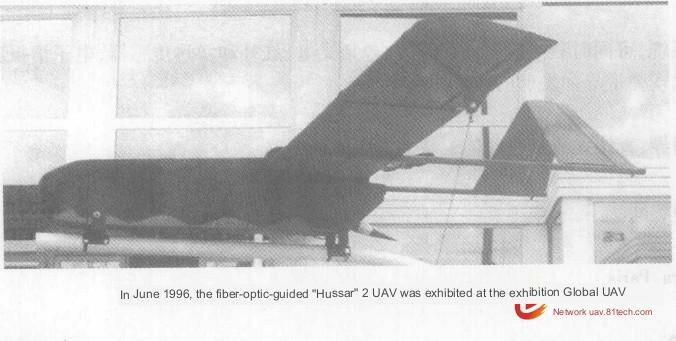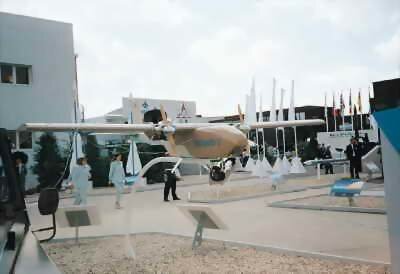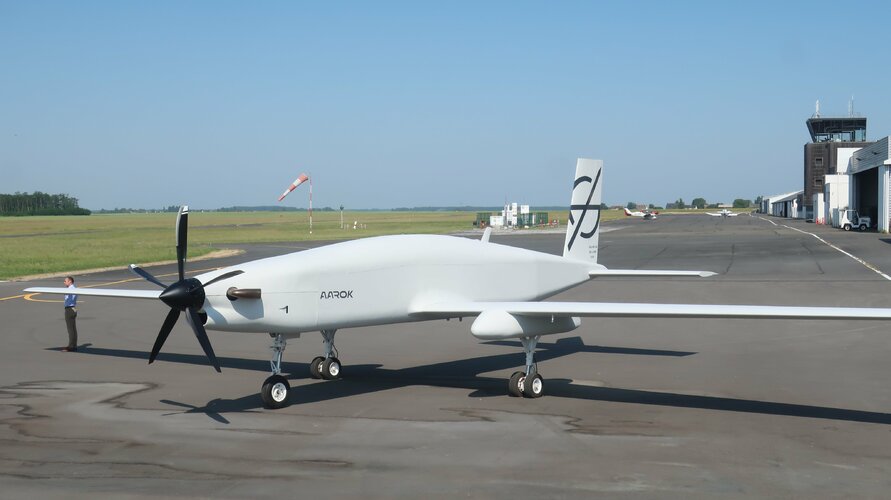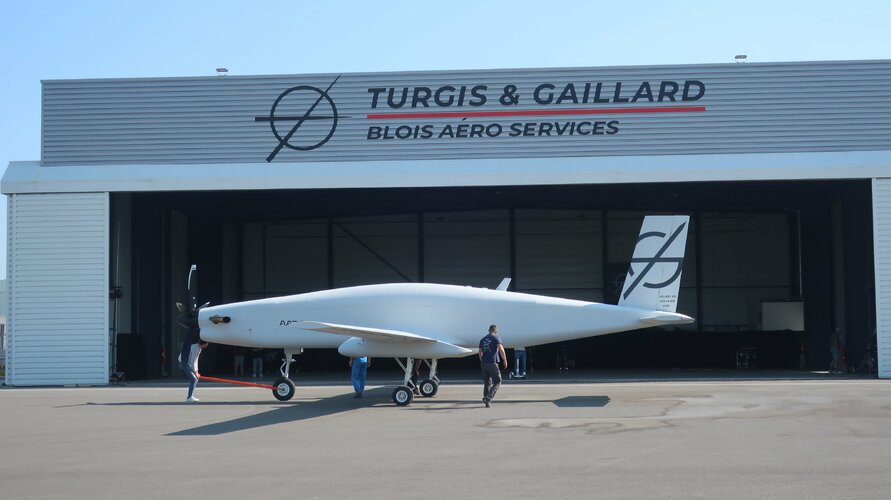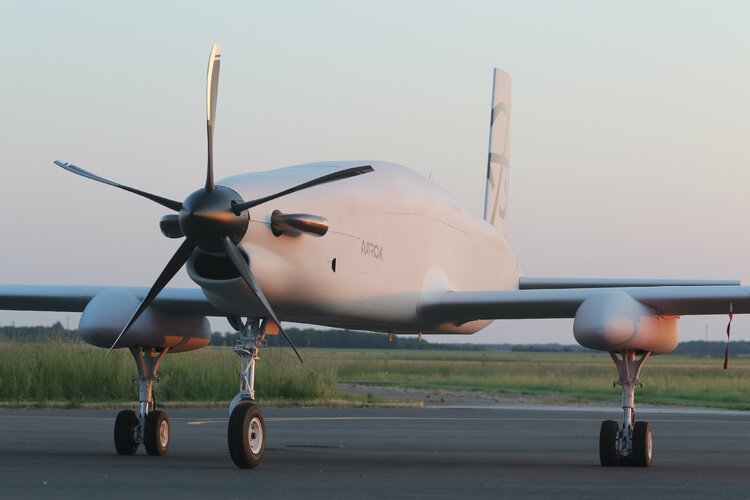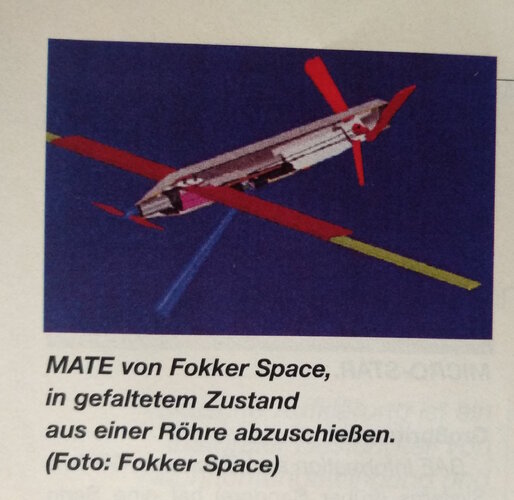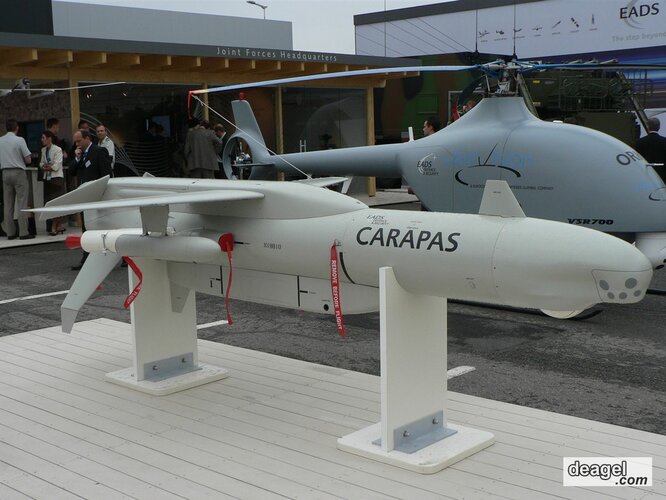You are using an out of date browser. It may not display this or other websites correctly.
You should upgrade or use an alternative browser.
You should upgrade or use an alternative browser.
Various UAV and UCAV Designs from Europe
- Thread starter hesham
- Start date
Dutch army airborne pathfinders are currently trialing the Quantum systems Trinity VTOL.
 www.quantum-systems.com
www.quantum-systems.com
Trinity F90+ - Quantum-Systems GmbH
Spanish company Arquimea recently unveiled their QLM-40 loitering munition

 www.janes.com
www.janes.com

FEINDEF 2021: Arquimea unveils QLM-40 loitering munition
Arquimea unveiled the QLM-40 loitering munition at the International Defence and Security Fair (FEINDEF) held in Madrid on 3–5 November.
Couple of new EU PESCO projects were given the green light this week.
Next Generation Small RPAS (NGSR) NGSR aims to develop a small (150Kg) highly deployable, multi-purpose and multi-role tactical #RPAS. The system will be able to deploy, take off, land and operate in a tactical environment without need for a runway
Small Scalable Weapons Aims to provide MoDs with a new, small, low- cost weapon. Equipping conventional and rotary, manned and unmanned aerial vehicles with ever-present man-in-the-loop.
Rheinmetall has stepped in to save well known but bankrupt German UAV manufacturer EMT.

 t.co
t.co

Rheinmetall Takes Over EMT - European Security & Defence
Rheinmetall has taken over the activities of German UAV maker EMT as part of its strategy to help digitise the German Armed Forces.
 t.co
t.co
Now, when I think of the wingman concept-I think of a B-1R missile truck with a powerful radar-lidar and passive sensored fighter drones serving as the Fighter Destroyers hounds. Guns only...coaxing targets into where the missile truck line of fire is.
- Joined
- 24 November 2008
- Messages
- 1,549
- Reaction score
- 2,606
UAVision's Ogassa OGS42V hybrid VTOL UAS
https://www.uavision.com/ogassa-ogs42v
View: https://youtu.be/vTRBigqTiqo
https://www.uavision.com/ogassa-ogs42v
- Joined
- 24 November 2008
- Messages
- 1,549
- Reaction score
- 2,606
Schiebel's Camcopter S-100
https://www.secretprojects.co.uk/threads/austrias-schiebel-s-100-«-camcopter-»-uav.19821/
Quite impressive payload capability for a relatively small UAS with a max take-off mass of 200kg...
View: https://youtu.be/MkIiAoy69EA
https://www.secretprojects.co.uk/threads/austrias-schiebel-s-100-«-camcopter-»-uav.19821/
Quite impressive payload capability for a relatively small UAS with a max take-off mass of 200kg...
Attachments
I've been looking for this Ukrainian drone project that I think I've seen on one of their many defense manufacturer websites, but haven't been able to track down when I searched for it again (so I guess it counts as a vaporware/proposed product). The characteristics I remember are:
-Propeller driven.
-Shaped like a crewed light aircraft (and likely converted from such)
-Ability to be armed with (light) guided or unguided weapons.
Anyone got any idea about a model name, or am I just remembering it wrong?
-Propeller driven.
-Shaped like a crewed light aircraft (and likely converted from such)
-Ability to be armed with (light) guided or unguided weapons.
Anyone got any idea about a model name, or am I just remembering it wrong?

First long distance cargo drone launched
Black Swan, the first unmanned drone for long distance freight services, will start operation in Europe in 2022
jsport
what do you know about surfing Major? you're from-
- Joined
- 27 July 2011
- Messages
- 7,714
- Reaction score
- 5,721

Airbus teams with Japan telcos to study connectivity services from high-altitude platforms
Tokyo, Japan (SPX) Jan 18, 2022 - Airbus, Nippon Telegraph and Telephone Corporation (NTT), NTT DOCOMO, and SKY Perfect JSAT have jointly begun studying the feasibility of collaborating on future high-altitude platform stations (HAP
www.spacewar.com
- Joined
- 9 October 2009
- Messages
- 21,944
- Reaction score
- 13,576

World's First Hydraulic Drone Promises Six-Hour, Non-Stop Flights Over 500 Miles
By powering spinning propellors with hydraulics instead of electricity, this drone massively boosts its range.

Flowcopter begins testing the world's first hydraulic multicopter
Multicopters would be able to lift heavier loads and stay in the air longer if they could use a high-density power source like gasoline instead of low-density lithium batteries. But gasoline engines, with their weird, peaky torque curves, aren't nearly responsive enough to keep a multicopter…
Flowcopter's Innovative Hydraulically-Propelled Drone is Claimed to be World's First, Has 500-Mile Range
H/t: Gizmodo The problem with most drones today is that they typically can fly for 1-hour maximum before needing to be recharged, but Flowcopter's new multicopter aims to change that. Rather than electric motors, it's powered by aviation-certified combustion engines using Digital Displacement...
 www.techeblog.com
www.techeblog.com
Last edited:
France is to develop 2 LM systems analogous to Switchblade 300 & 600, small SR anti personnel and a LR (50km) anti armor etc version under project "Colibri" and Larinae" Might be the perfect way for MBDA to get into the LM game.
In French.
In French.
shin_getter
ACCESS: Top Secret
- Joined
- 1 June 2019
- Messages
- 1,102
- Reaction score
- 1,482
Chinese Style downward facing bomb seems a simpler solution:


The Spanish companies Swarming Technologies & Solutions , specialized in unmanned systems and swarms, and Instalaza , a leader in light anti-tank and multipurpose systems, are collaborating in the development of loitering or loitering systems .
Halfway between unmanned aircraft and missiles, loitering or loitering systems can hover over the battlefield in search of targets. These are cost-effective equipment that are being widely used in current conflicts that have aroused the interest of the Spanish Armed Forces.
Combining the areas of expertise of both companies, STS and Instalaza have combined the airborne segment and swarms of the former with the tube-launched munitions and warheads of the latter, creating a family of fixed and rotary wing media systems that they will be able to operate in a swarm and in coordination with other manned and unmanned vehicles, in order to cover the maximum of the foreseeable operational scenarios in the future

Los enjambres y municiones merodeadoras de Swarming Technologies & Solutions e Instalaza
Las empresas españolas Swarming Technologies & Solutions, especializada en sistemas no tripulados y enjambres e Instalaza, líder en sistemas anticarro y...





Another Spanish UAV/LM


 monch.com
monch.com


Eurosatory 2022: Arquimea Unveils Q-SLAM-40 UAS - MOENCH PUBLISHING GROUP
Also Showcases eCOMPASS Mortar Aiming Solution
 monch.com
monch.com
- Joined
- 9 October 2009
- Messages
- 21,944
- Reaction score
- 13,576
A Greek surveillance drone project:

 www.defensenews.com
www.defensenews.com

ORIGINAL CAPTION: Billed as a multipurpose drone, Archytas is capable of operating in both rescue and military operations. (Hellenic Aerospace Industry)

Greece unveils new surveillance drone to keep tabs on its islands
Locked in a historic rivalry with Turkey, itself a drone powerhouse, the rhetoric between Athens and Ankara has sharpened recently.
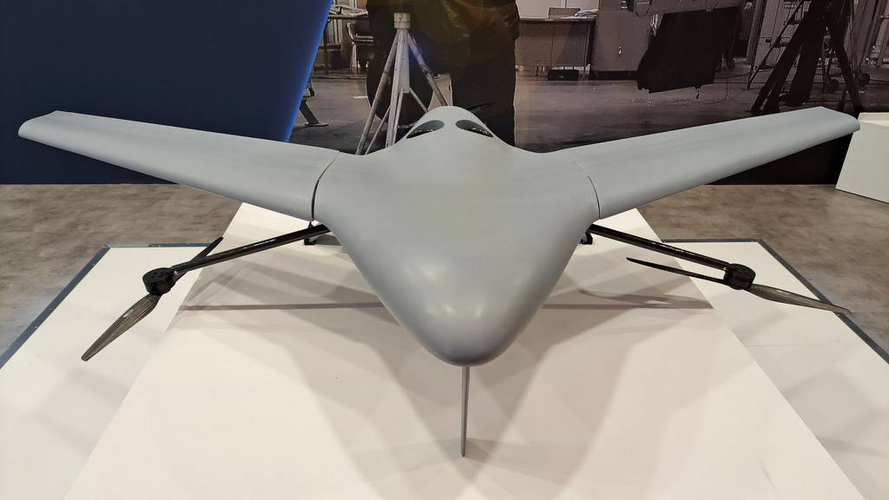
ORIGINAL CAPTION: Billed as a multipurpose drone, Archytas is capable of operating in both rescue and military operations. (Hellenic Aerospace Industry)
Officials presented the vertical-takeoff-and-landing drone for the first time at the International Exhibition of Thessaloniki earlier this month. The fixed-wing aircraft is a joint production between Hellenic Aerospace Industry and the Aristotle, Thessaly and Democritus universities. Representatives said the Archytas unveiling was meant to be the first in a line of upcoming products coming out of the partnership.
Billed as a multipurpose drone, Archytas is capable of operating in both rescue and military operations. According to information provided by Hellenic Aerospace Industry, it can provide situational awareness along the land and sea borders of Greece, monitor ground vehicles, accompany frigates, and detect unmanned marine vehicles moving at high speeds.
Nikos Koklas, director of research and design at Hellenic Aerospace Industry, told Defense News the drone was designed to “perform these missions with minimal modifications, which can occur on the spot in the field.” The aircraft’s “excellent surveillance and reconnaissance capabilities manifest a perfect fit for the protection of Greek territory and islands alike,” he added.
Lift vs compressed sizeA biplane?! Why?
On a tangent, from back in April (forgot to post it back then):
France orders second VSR700 unmanned helicopter prototype
France has ordered a second prototype of the VSR700 unmanned helicopter demonstrator that Naval Group is developing alongside Airbus Helicopters.www.janes.com
Video of the VSR700 from Euronaval 2022. It shows a new configuration for ASW missions with a 4 sonobuoy launcher under the belly.
View: https://twitter.com/AirbusHeli/status/1582313207087058945?s=20&t=bq8mGOBW8Y04c8Beo5zRpw
- Joined
- 9 October 2009
- Messages
- 21,944
- Reaction score
- 13,576

The cargo hauling aircraft with no pilots on board
Rejecting deliveries to the doorstep, some drone makers are betting on bigger pilot-free aircraft.
www.bbc.com
aonestudio
I really should change my personal text
- Joined
- 11 March 2018
- Messages
- 2,963
- Reaction score
- 7,481
- Joined
- 9 October 2009
- Messages
- 21,944
- Reaction score
- 13,576

Latvia’s Atlas Dynamics to open drone production plant in Ukraine
Latvian drone company Atlas Dynamics plans to open in early 2023 a research and development factory in Ukraine and later on a production plant.
- Joined
- 10 April 2021
- Messages
- 401
- Reaction score
- 1,556
In a German magazine from 1996 i found a reference to a Recon-UAV by Aérosptiale called 'HUSSARD'. It was supposed to use a long range fibre optic cable similar to the POLYTHEM missile and was offered for the German LUNA program.
Does anyone have any more information on this RPV? I can find almost nothing online.
Edit: a HUSSARD 2 is also mentioned in this flightglobal article
Does anyone have any more information on this RPV? I can find almost nothing online.
Edit: a HUSSARD 2 is also mentioned in this flightglobal article
Last edited:
- Joined
- 10 April 2021
- Messages
- 401
- Reaction score
- 1,556
In a German magazine from 1996 i found a reference to a Recon-UAV by Aérosptiale called 'HUSSARD'. It was supposed to use a long range fibre optic cable similar to the POLYTHEM missile and was offered for the German LUNA program.
Does anyone have any more information on this RPV? I can find almost nothing online.
Edit: a HUSSARD 2 is also mentioned in this flightglobal article
Found some details on a sketchy Chinese site and put it through google-translate:
Hussard 2 UAV
The French Hussard 2 UAV is a fiber-optic guided/short-range/surveillance UAV. First displayed at the Paris Air Show in 1993 under the original name "Pirate", the aircraft system is designed as a small, low-cost, high-performance system used by infantry or mechanized small combat units. The "Hussar" 1 prototype appeared at the Paris Air Show in 1995, and performed to the French Army in May 1996. Since 1996, the "Hussar" 2 has been developed. Use trials were still ongoing in 1997. "Hussar" 2 demonstrated to the German Army in August 1996 but was not selected, and in the third quarter of 1997 to the French Army.
Variant"Flibuste" (Flibuste):
target model, shown at the defense exhibition in June 1996.Hussar 2: The second-generation reconnaissance, surveillance and targeting version of the Pirat.
Attachments
alberchico
I really should change my personal text
- Joined
- 14 January 2014
- Messages
- 706
- Reaction score
- 1,512

France’s Largest-Ever Drone Has Broken Cover
Developed secretly, the Aarok medium-altitude, long-endurance drone is planned to take to the air before the end of the year.
Does anyone think Europe should have developed a simple concept like this for their defense needs instead of the more complex twin engined Eurodrone MALE design ?
- Joined
- 1 April 2006
- Messages
- 11,374
- Reaction score
- 10,200
For the first hand, you'd find reasons why Eurodrone has became two engined beast (while Dassault, for example, offered single engined Reaper on steroids). AFAIR the matter is EU cucumbermeters insisted on two engined bird on a basis of flight security in shared air space.

 www.challenges.fr
www.challenges.fr

Le futur drone européen risque-t-il le crash définitif ?
Un rapport de la commission de la défense du Sénat étrille le projet d’Eurodrone confié à Airbus, Dassault et Leonardo, jugé « obèse » et trop cher
Last edited:
German Bundewehr testing out the "Grille/Cricket"Medivac UAV from Avilus.
Erprobung : The 700 kg rescue drone "Cricket" could one day transport the seriously injured as a flying #Intensivstation . The #Drohne was tested for military usability on the #WTD61 as part of the search for innovation.
- Joined
- 10 April 2021
- Messages
- 401
- Reaction score
- 1,556
Again an UAV i can find very little information on:
The Fokker Space 'MATE' tube launched reconnaissance uav.
The Fokker Space 'MATE' tube launched reconnaissance uav.
SourceW. Wegereef of Fokker Space also sees such a civil application for the Manportable Aerial Terrain Explorer (MATE). Fokker Space initially developed the MATE as a military observation aircraft. The device weighs about 4.5 kilos, has a diameter of 18 centimeters and is about 90 centimeters long. Once fired, the device unfolds itself and reaches a wingspan of 2.5 meters. Wegereef: "I can imagine that in the future the fire brigade and police will have one in the car to use in the event of calamities, for example a forest fire in the Veluwe."
Attachments
Scott Kenny
ACCESS: USAP
- Joined
- 15 May 2023
- Messages
- 11,542
- Reaction score
- 14,138
US wildlands firefighters would do some unspeakable things for those!Again an UAV i can find very little information on:
The Fokker Space 'MATE' tube launched reconnaissance uav.
SourceW. Wegereef of Fokker Space also sees such a civil application for the Manportable Aerial Terrain Explorer (MATE). Fokker Space initially developed the MATE as a military observation aircraft. The device weighs about 4.5 kilos, has a diameter of 18 centimeters and is about 90 centimeters long. Once fired, the device unfolds itself and reaches a wingspan of 2.5 meters. Wegereef: "I can imagine that in the future the fire brigade and police will have one in the car to use in the event of calamities, for example a forest fire in the Veluwe."
- Joined
- 10 April 2021
- Messages
- 401
- Reaction score
- 1,556
Surveyor 600 was a high-speed low-level-penetration recon UAV built for the French CARAPAS (CApacité drone RAPide AntileurreS) program by EADS and Galileo Avionica based on the Italian Mirach 100/5 target drone. It was supposed to carry a dual EO/IR and ESM payload.
SourceUnder the terms of the DGA’s CARAPAS (Capacité rapide anti-leurres) demonstration programme, for which
proposals were submitted by Dassault Aviation teamed with Sagem, as well as Thales and EADS DCS, the selected contractor is to demonstrate the feasibility of conducting simultaneous electro-magnetic (ESINT/ELINT) and electro-optical/IR information gathering missions. This demonstration contract was awarded to EADS DCS teamed with Galileo Avionica, Italy in December 2003. The final system integration work is currently ongoing and the demonstration flights are scheduled to take
place at the Centre d’Essais des Landes (CEL) test range during the second half of 2005. For the possible future series production, the Carapas will be known as Surveyor 600.
SourceEADS has unveiled concepts for a 12h endurance tactical unmanned air vehicle and is to modify the Meteor Mirach 100.5 target drone into a low-altitude, high-speed surveillance system as a candidate for the French army's ongoing Multicapteurs MultiMission (MCMM) requirement
....
The MCMM programme is intended to field a "fast/slow" replacement for France's Sperwer tactical and CL-389 low-altitude, high-speed UAV systems by 2010. Dassault-Sagem is also competing for the requirement.
EADS plans to offer the Surveyor 2500 to meet the "slow" requirement, while the Mirach 100.5 derivative, designated Surveyor 600, would meet the "fast" requirement.
Surveyor 600 re-uses the Mirach 100.5 airframe, powerplant and navigation systems, but would have a 2.3m-span wing equipped with two hardpoints for additional sensors or stores. The Mirach 100.5 has a maximum take-off weight of 340kg. Surveyor 600 will have a maximum take-off weight of 450kg and a range of 150km (80nm). Maximum mission time is projected at up to 3.5h.
The DGA has funded construction of a prototype Surveyor 600 system equipped with a dual electronic support measures/electro-optical infrared payload to fly in the first half of 2005 under a demonstration programme designated Carapas.
Attachments
Last edited:
- Joined
- 24 November 2008
- Messages
- 1,549
- Reaction score
- 2,606
Fun fact, the helicopter UAS EADS ORCA in the background is still alive (in development). Now Airbus VSR700.
Similar threads
-
Various UAV and UCAV designs from Eastern Asia
- Started by hesham
- Replies: 45
-
-
-
Various UAV and UCAV designs from Australia
- Started by hesham
- Replies: 7
-








